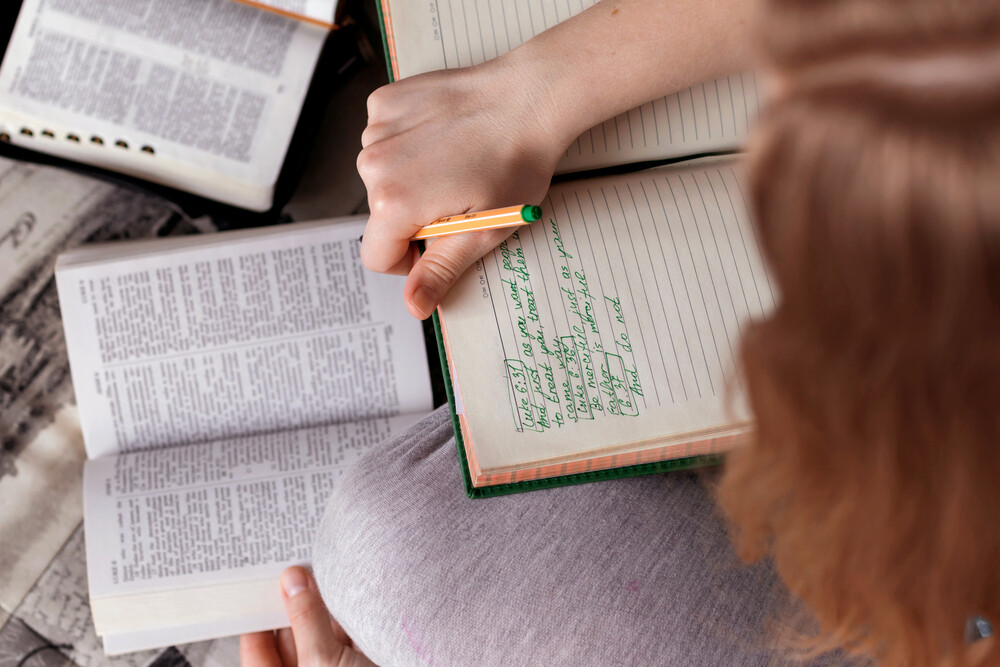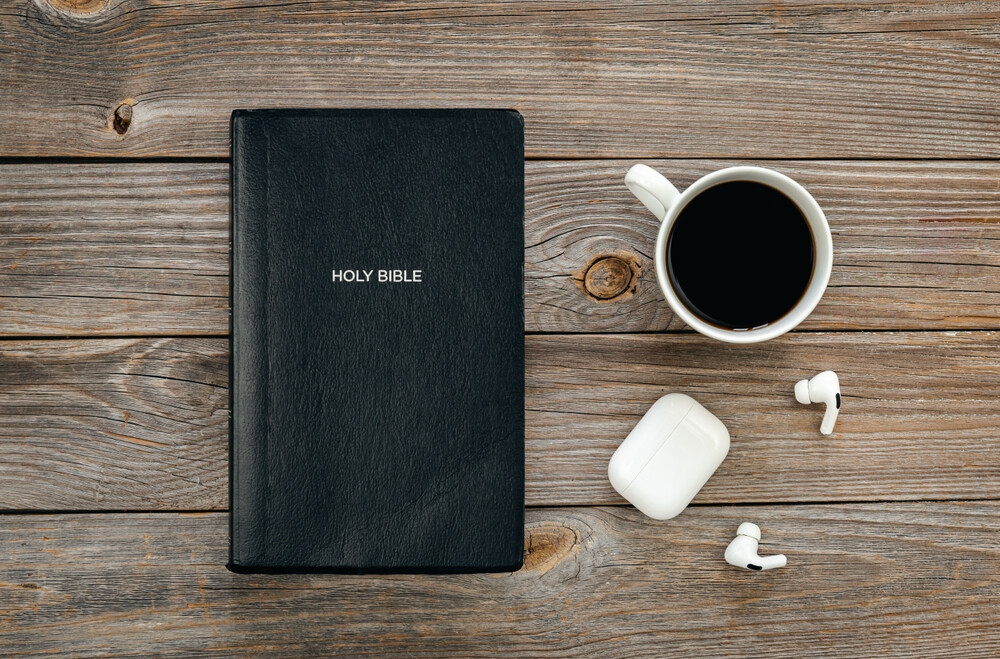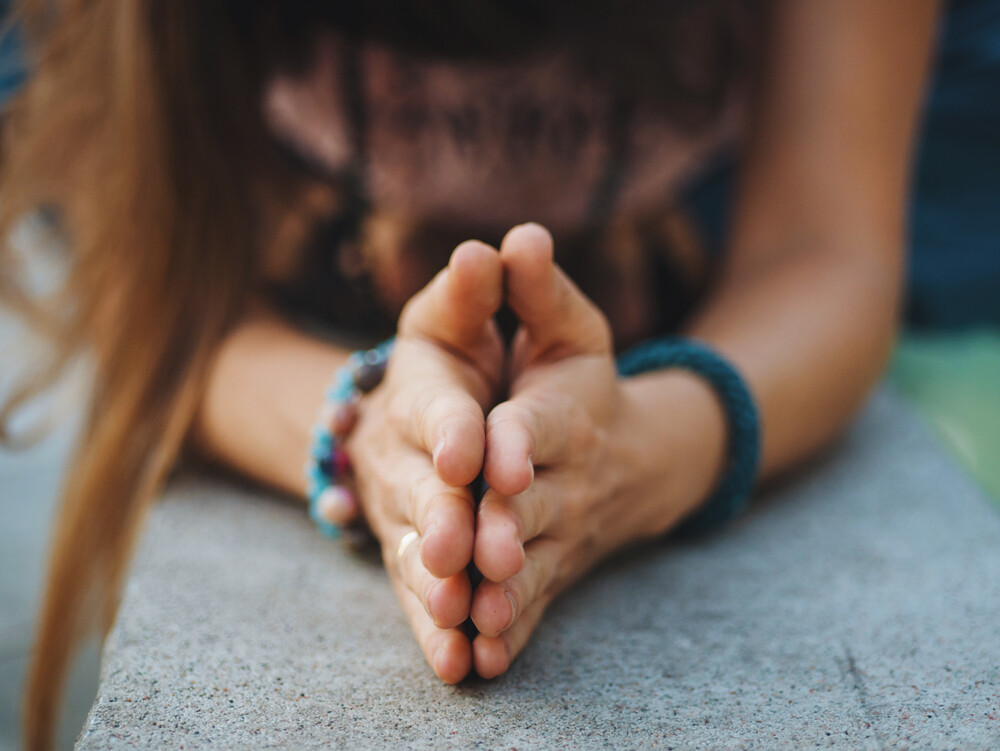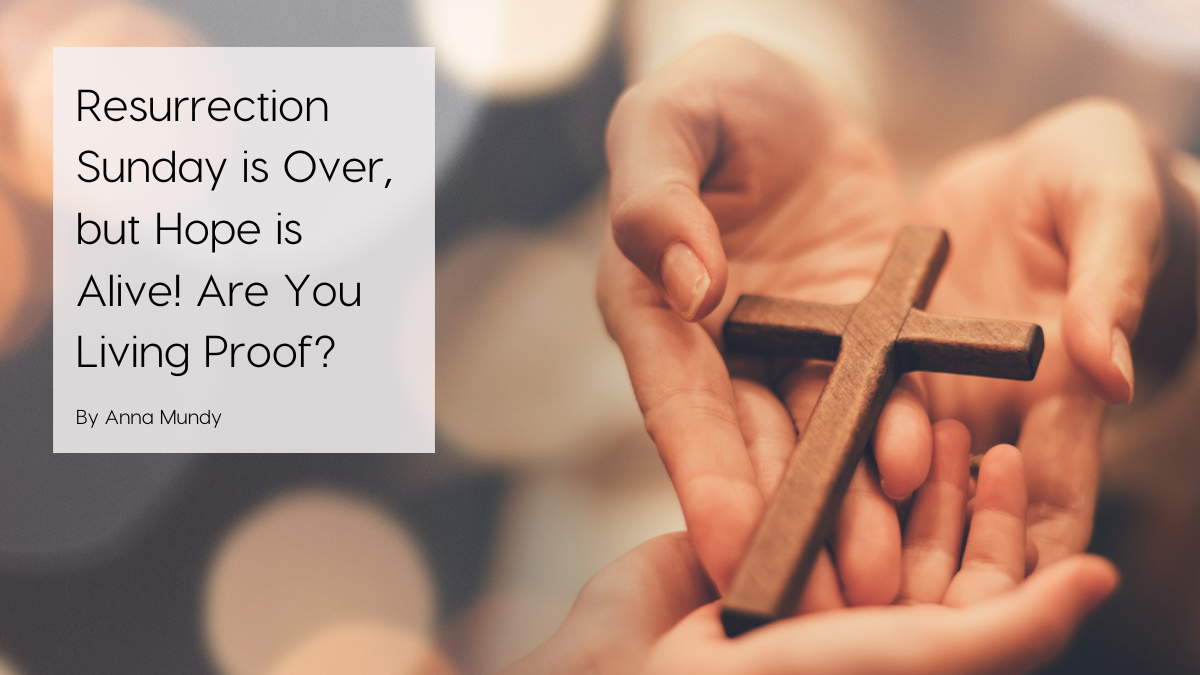If you are a Christian, or you've been dabbling your feet in Christianity, you've been told that the Bible is essential to your life. And while this is true, perhaps you've never really understood why. Maybe nobody's taken the time to pause and explain it to you, or you just haven't found out for yourself.
The Bible is not just any book or a collection of random stories. It is the Word of God that shares God's wonderful plan for me and for you! In this post, I hope to answer some of your questions about this special book and give you a meaningful way to study and engage with the Bible and with God. This isn't just for adults but for teens and kids too. I hope you'll join me on this journey, and if you stick with it, I believe you'll find it worth it!
What is the Bible?
The Bible is made up of 66 books: 39 in the Old Testament (written before Jesus) and 27 in the New Testament (written after Jesus). The Bible is often called “God’s Word” or “The Word” because it is more than just a collection of stories of things that God and his people did. The words in the Bible are from God.
2 Timothy 3:16 says, 'All Scripture is breathed out by God . . .'
The books of the Bible are divided into five general genres: history, prophesy, law, poetry/wisdom, and letters. Some of the books tell the history of God’s people; some are about the rules God gave his people to live by; some are poetic; others are letters meant to encourage Christians; and some are prophetic – providing information on things to come.
Even though the Bible was written long ago, it is still essential today! Hebrews 4:12 says, “For the Word of God is living and active, sharper than any two-edged sword, piercing to the division of soul and of spirit, of joints and of marrow, and discerning the thoughts and intentions of the heart.”
Why do we study the Bible?
We study God’s Word so that we can know God. Not just to know God with our brains, but with our hearts as well. To truly know someone, not just to know about them, we spend time with them. To know God, we must spend time with him, too.
In Matthew 7:24-25, Jesus said, “Everyone then who hears these words of mine and does them will be like a wise man who built his house on the rock. And the rain fell, and the floods came, and the winds blew and beat on that house, but it did not fall, because it had been founded on the rock."
Here at Berean, we want you to be like the wise man who built his house upon the rock - And that rock is Jesus! Reading and studying the Bible and praying to God help you to build your foundation on Jesus.
So, how can you get started studying the Bible?
First, you'll need to make a plan. Think of a time each day when you can read the Bible and pray. It may be in the morning, after school or work, or at night right before you go to bed. Just pick a time that you can stick to each day. There are a variety of ways to spend time in God’s Word. You can simply read the Bible, use Bible studies, or use Bible study methods. In this post, I'll walk through one simple yet effective way to study the Bible. It's called the SOAP Method.

Let's begin with an overview of the SOAP Method.
The letters in SOAP stand for the following:
- S: Scripture – reading the selected Scripture (the Bible verse) slowly and thoroughly
- O: Observation – taking notes on what you observe (Think: who, what, where, when, and why)
- A: Application – asking how what you read applies to your life
- P: Prayer – spending time talking to God about what you read (and anything else on your mind!)
The SOAP Method of Bible Study is one that your kids can do as well. Don't worry, I'll show you how!
Before you start any Bible reading, begin with prayer. This helps to focus your attention on God. A simple prayer is this: “Father God, thank you for this time that I get to spend with you. Help me to stay focused. Help me to learn something new. Help me to learn more about you. In Jesus’ name, amen.”
You can do the SOAP process in one sitting or over multiple days. For the purpose of our example study here, you can do one letter of SOAP each day over four days to help you better understand how the process works. To get ready, you'll need to gather a few items. You should have a notebook (you can google “SOAP method worksheets for kids" and you will find many examples that you can download or purchase, but a simple notebook will do), pencil/pen, crayons, colored pencils, and/or markers.
We’ve broken the SOAP Method down into two age groups: younger kids and older kids & adults. Think of younger as preschool and elementary and older as middle and high school.

Day 1 - S: Scripture
The Scripture you'll study for our example is Isaiah 40:31: “But they who wait for the Lord shall renew their strength; they shall mount up with wings like eagles; they shall run and not be weary; they shall walk and not faint.”
Younger Kids:
- Read the verse by yourself or have someone read it to you. Read it through a few times. Read it slowly. You may want to read the passage first from a regular Bible and then, if possible, read it from a children’s Bible.
- Draw a picture of what you read or copy the Scripture on your paper.
Older Kids & Adults:
- Read the verse. Read it through a few times. Read it slowly. You may want to read the Scripture from a few translations (such as the ESV, NLT, and NRSV), because sometimes reading in different translations can help you better understand the passage. You may even want to read it from a children’s Bible. That’s okay!
- Copy the Scripture word for word on your paper. When reading a long passage, choose just part of it to write out.
- Rewrite the Scripture using your own words. Be careful not to change the meaning! Write it down using simpler words that you understand better.
For both kids and adults, end your session in prayer. Here's an example you can use or say your own: “Awesome, God. Thank you that someone thought of this method to study your Word. I’m excited to learn more about you through reading the Bible. Protect my time when I do this. In Jesus’ name, amen.”

Day 2 - O: Observation
As you did with Day 1, begin your time in prayer to help focus your attention on God. You can pray the same prayer as yesterday or say your own: “Father God, thank you for this time that I get to spend with you. Help me to stay focused. Help me to learn something new. Help me to learn more about you. In Jesus’ name, amen.”
So far, you've learned about the "S" in SOAP, which stands for Scripture, and you've spent time reading Isaiah 40:31. Continue with this same passage for Day 2 by focusing on the "O" for Observation. The definition of observation, according to Google, is "the action or process of observing something or someone carefully in order to gain information.
In this part, you will do a big-picture observation of the passage and its book of the Bible.
Big-Picture Observation: The Book
Use your Bible to answer the Five W's of the book of the Bible of the Scripture you are reading (in this case, the book of Isaiah):
- Who (Who is the book written to?)
- What (What is the book about?)
- Where (Where was the book written?)
- When (When in history was the book written?)
- Why (Why was the book written?)
Many Bibles have an overview at the beginning of each book that includes tools such as timelines, themes, and answers to the Five W’s.
Big-Picture Observation: The Passage
Answer the Five W’s for the passage of Scripture you are reading (in this case, Isaiah 40, or specifically, Isaiah 40:31).
- Who (Who is the passage written to?)
- What (What is the passage about?)
- Where (Where was the passage written?)
- When (When in history was the passage written?)
- Why (Why was the passage written?)
Many Bibles have footnotes that give you more information about specific passages or verses. Just remember, Scripture is God’s words while the footnotes are human words to help you understand.
After you answer the Five W’s, read Isaiah 40:31 and move into specific observation.
Specific Observation
Younger Kids:
- Write down any observations you have about what you read. These are some questions you can ask (write the answers in your notebook):
- Do you see the same word over and over?
- Do you see a sentence or phrase over and over?
- Are there any words that make you stop and wonder?
- Are there any words that you don’t understand?
- Does this Scripture remind you of any other Scripture in the Bible?
- Answer this question: "What is this Scripture about?" Write it down or draw it.
Older Kids & Adults:
- Write down any observations you have about what you read. These are some questions you can ask (write the answers in your notebook):
- What words or phrases are repeated over and over?
- What do the verses before and after the selected Scripture say?
- What words don’t you understand?
- Does this Scripture remind you of any other Scripture in the Bible?
- What did this Scripture mean to the first audience (to whom it was written)?
- Use additional resources (e.g., a concordance or Bible apps) to help you answer those questions.
- Answer this question: "What is this Scripture about?" Write it down.
As you did with Day 1, end in prayer: “Creator, God. Thank you for your Word. Thank you that we can know you by reading this special book that has not changed through time. Help me to always seek answers to know you more. In Jesus’ name, amen.”

Day 3 - A: Application
On Day 2, you learned about the "O" in SOAP, which stands for Observation, and you spent time asking and answering questions about Isaiah 40:31. On Day 3, you'll focus on the "A" for Application.
A big part of the application process is to ask God how what you read applies to your life. Ask God, “What should I learn from this Scripture?” Remember, God’s Word is alive and active (Hebrews 4:12). His Word is always teaching! It teaches us about God, about people, or about us personally.
First, read Isaiah 40:31 again slowly. Then pray, asking the Holy Spirit to speak to you. Finally, think about what you’ve learned and how to apply it to your life.
Younger Kids:
- Read Isaiah 40:31 one to three times.
- Ask God these questions:
- What do you want me to learn from Isaiah 40:31?
- Am I being obedient to you? Am I doing what you want me to do?
- What promises do you want me to see in this passage?
- Show me how Isaiah 40:31 points to Jesus.
- Choose a way to respond to what God taught you. Here are some ideas:
- Write down the answers to the questions you asked God.
- Draw a picture of what you learned.
- Write or tell a story about what you learned.
Older Kids & Adults:
- Read Isaiah 40:31 one to three times.
- Ask God these questions:
- What do you want me to learn from Isaiah 40:31?
- Is there anything sinful in my life that needs to change?
- Do I need to have an attitude adjustment?
- Am I being obedient to you?
- What promises do you want me to see in this passage?
- Show me how this passage points to Jesus.
- Choose a way to respond to what God taught you. Here are some ideas:
- Write down answers to the questions you asked God.
- Draw a picture of what you learned.
- Write a poem about what you learned.
- Write your thoughts and feelings in a journal.
- Write a song.
Day 4 - P: Prayer
On Day 3, you learned about the "A" in SOAP, which stands for Application. You spent time asking God what Isaiah 40:31 was teaching and how to apply it to your life. On Day 4, you'll focus on the "P" for Prayer.
What is prayer? Prayer is simply talking with God! It involves us talking and listening. It involves praising God and confessing our sins. It’s telling God what’s on our hearts and minds. God is amazing – He created the world and everything in it. He knows everything! He is everywhere! He is SO BIG, but he is so personal too. He wants you to know him and wants to hear everything you have to say.
So now, we’re going to spend time with God in prayer.
Younger Kids:
- A good place to start prayer is with “hello.” You can start by saying "hello" to God however you want.
- Then, spend time thanking God and giving him praise. You can say words such as, “I praise you for creating the world. Thank you for my parents.” Thank God for all the things that you are thankful for.
- Tell God what you learned from Isaiah 40:31.
- Tell God you are sorry for your sin.
- Tell God how you are feeling.
- Ask God to help you do what he wants you to do.
- Go for it! Spend time with God in prayer now.
Older Kids & Adults:
- A good place to start prayer is with “hello.” You can start by saying "hello" to God however you want.
- Spend time thanking God and giving him praise. You can say words such as, “I praise you for creating the world. I praise you for always being there. I praise you because you care for people.” Thank God for what he has done and is doing in your life and in those around you. Thank God for all the things that you are thankful for.
- Tell God what you learned from Isaiah 40:31.
- Confess any sin that God revealed to you. Repent – turn away from that sin and turn back to God.
- Tell God how you are feeling. Tell him what’s on your heart and in your mind.
- Ask God to help you do what he wants you to do from what you learned in the Scripture.
- Take some time just to be quiet with God. This may feel strange at first, but sometimes God speaks to us – not necessarily audibly, but in our thoughts – when we are quiet with him.
- Go for it! Spend time with God in prayer now.
Remember, to know God, you must spend time with him!
God gave us his Word to encourage us, guide us, and instruct us in the way we should go. His Word is his letter to us! Just as we spend time with our friends to get to know them, we must spend time with God to know him, too.
The SOAP Method is just one way to study the Bible. There are so many other resources that are helpful, too. There are study guides that will take you through books of the Bible and guides that will help you learn more about a specific topic or person. Some of the guides go in-depth while others give great overviews.
The most important thing is to spend time with God. That's the only way you will get to know him better. He has so much he wants to share with you!







